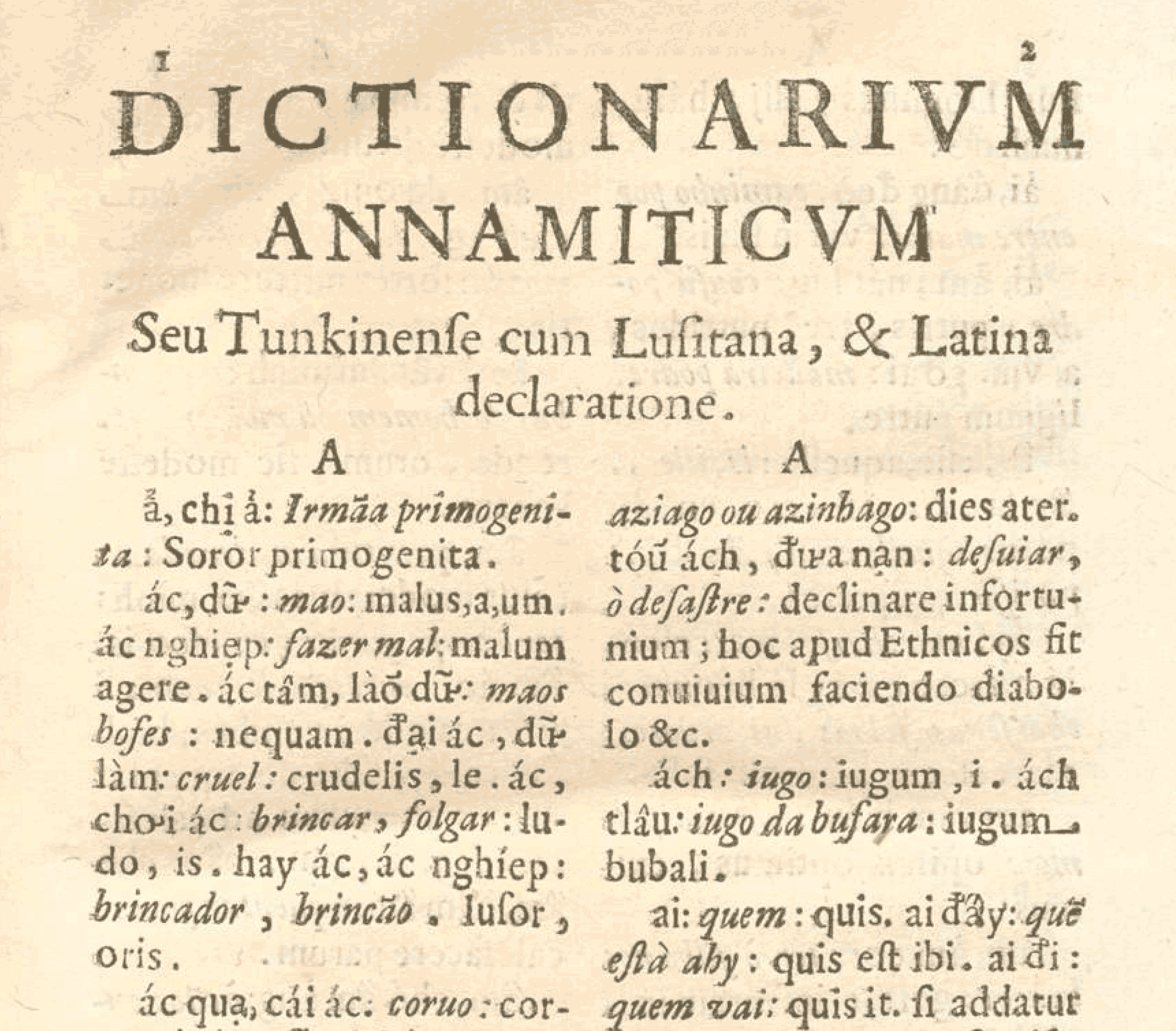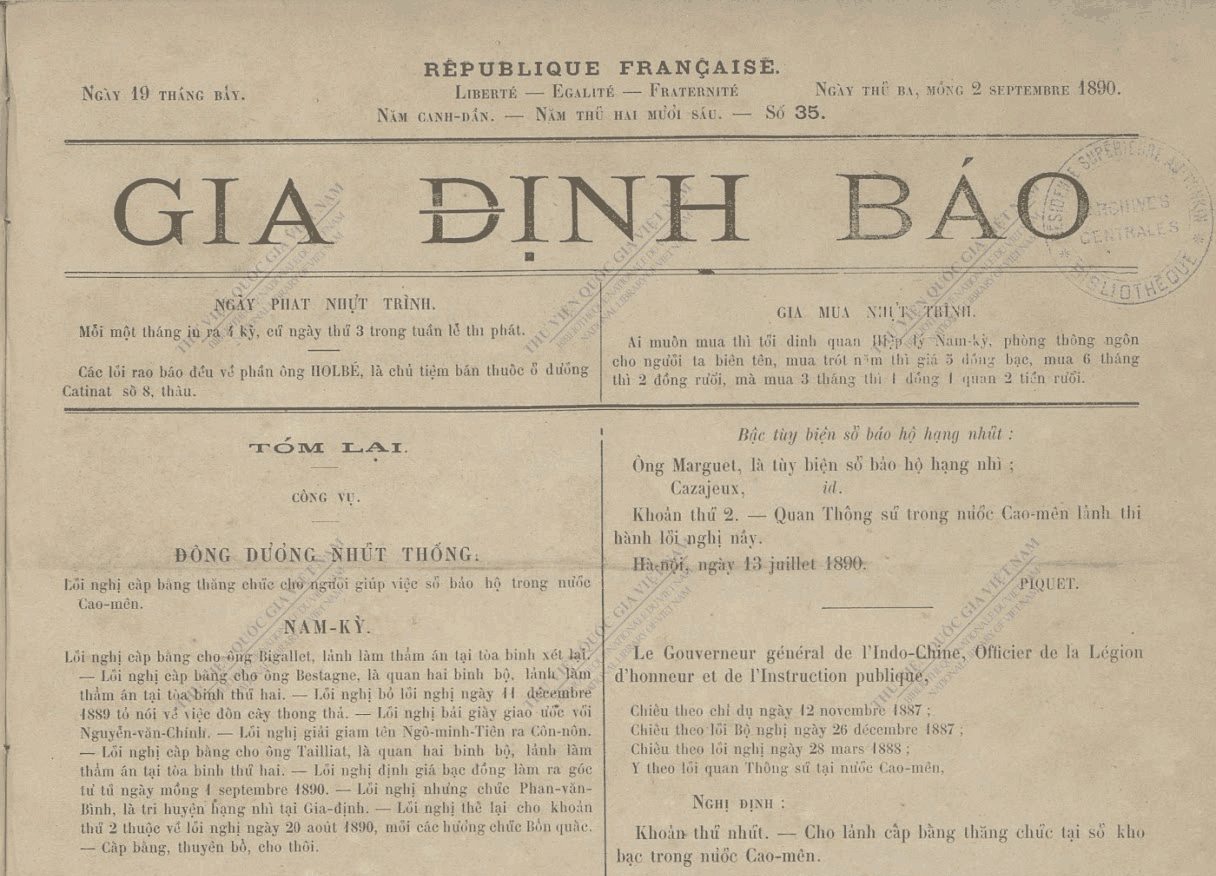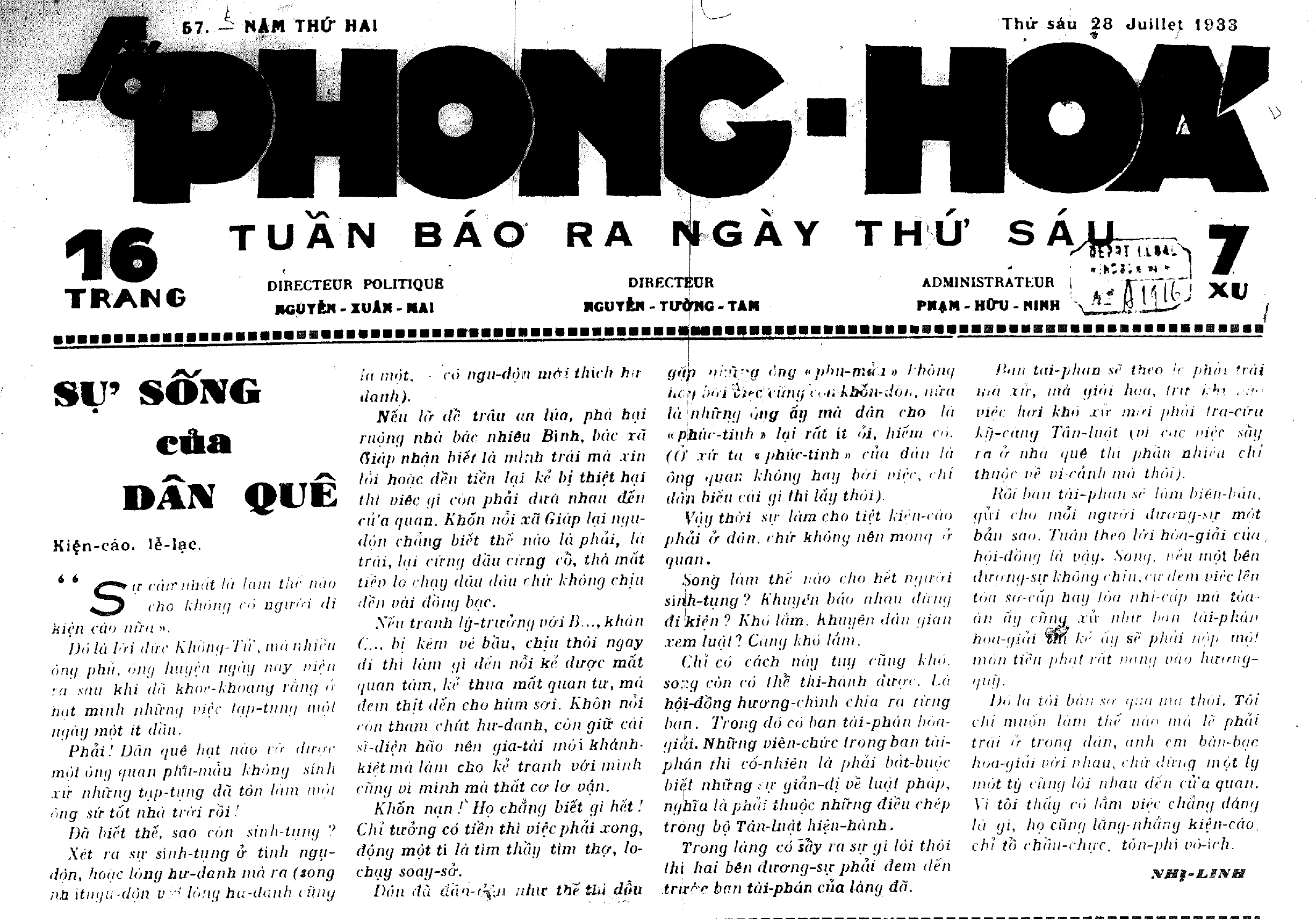From 207 BC to 939 AD, the rule of several Chinese dynasties had a profound influence on the Vietnamese culture and literature. As a result, the official Vietnamese language was written in Classical Chinese (chữ Nho) before the development of native Vietnamese script (chữ Nôm) and the adoption of the Latin alphabet (Quốc ngữ).1
History
Chữ Nho
Under the control of the Chinese in the ninth century, Vietnam’s governmental documents were written in Chinese ideographs called chữ Nho (scholars’ script), also referred to as chữ Hán (Han script). Even after Vietnam declared its independence in 939, chữ Nho was the common written language in official papers until the beginning of the twentieth century. Chữ Nho is still used today in calligraphic banners for traditional occasions such as festivals, funerals, Lunar New Year (Tết), and weddings. Although chữ Nho was held in high regard—because being chữ Nho literacy was the key to power, wealth, and prestige—Vietnamese scholars wanted to develop their own writing system called chữ Nôm.2
Chữ Nôm
Chữ Nôm is the Vietnamese writing system based on Chinese ideographs. Even though there is no known record of when it was created, chữ Nôm was well established by the eleventh century. Due to its complex use of Chinese characters to form Vietnamese phonemic values, chữ Nôm was difficult to learn. As a result, only a few dozen Vietnamese around the world can read chữ Nôm today. Publications written in Nôm characters are also rare. Only small samples were found in Nguyễn Trãi’s Quốc-âm Thi-Tập (Collected Poems in Native Words) and Hồ Xuân Hương’s erotic-hidden poetry.3
Quốc Ngữ
The Romanization of the Vietnamese writing system began in the seventeenth century when Catholic missionaries needed to transcribe scriptures for their new converts. As chữ Nôm was used only by the elite and the privileged, the missionaries wanted to introduce religious text to a broader population, including lower-class people who would not have been able to read Nôm ideographs.
In 1624, French Jesuit and Lexicographer Alexandre de Rhodes began his mission in Cochinchina where he met Portuguese Jesuit Francisco de Pina and learned Vietnamese at an astonishing speed. Within six months, Rhodes mastered the language. Unfortunately, Pina died in a shipwreck in Đà Nẵng a year later. Rhodes went on with his mission and spent twelve years listening to the local people.
In 1651, six years after he had left Vietnam, Rhodes published Dictionarium Annamiticum Lusitanum et Latinum and the Linguae Annamiticae seu Tunchinensis Brevis Declaratio. Although his publications laid down the groundwork for Quốc ngữ (national language), Rhodes was not the first creator of the Romanization. His works were based on Pina’s method, which was inspired by Father João Rodrigues’s Romanized Vietnamese writing system. Father Rodrigues’s invention was further developed and improved by Portuguese Jesuit Gaspar do Amaral, Portuguese Jesuit António Barbosa, and French Jesuit Alexandre de Rhodes.4

In 1773, more than 100 years later, French Jesuit Pierre-Joseph-Georges Pigneau de Béhaine published Dictionarium Anamitico-Latinum in Latin, Nôm script, and Quốc ngữ. In 1838, Bishop Jean-Louis Taberd followed up with Dictionarium Anamitico-Latinum, which was based on Pigneau de Béhaine’s work. One of the early adopters of the new Vietnamese writing system was Philipphê Bỉnh, a Vietnamese pastor who lived in Portugal. During his thirty years in Portugal, Bỉnh had written more than twenty one books in Quốc ngữ. His writing showed that Quốc ngữ had started to take shape.
Unlike chữ Nôm, which required extensive studying and practicing to master, the new Latin-based writing system was direct, approachable, and accessible. Vietnamese people could learn to read and write their own language in a few weeks instead of years. Even though Quốc ngữ made it possible to spread literacy and education to a large population, it did not become the official writing system until the early twentieth century under the French colonial rule (1864–1945).
The rise of the Latin-based writing system opened the door to education and print publications. Gia Định Báo (嘉定報), the first newspaper in Vietnam, published its first issue in Quốc ngữ on April 15, 1865. Under Director Trương Vĩnh Ký and Editor-In-Chief Huỳnh Tịnh Của, Gia Định Báo played an essential role in encouraging the Vietnamese people to study Quốc ngữ. Trương Vĩnh Ký had written over 118 publications ranging from research to transcribe to translate. In 1895, Gia Định Báo released Huỳnh Tịnh Của’s Đại Nam quốc âm tự vị, the first dictionary written by a Vietnamese scholar for the Vietnamese people.

In 1907, Vietnamese scholars such as Lương Văn Can, Nguyễn Quyền, and Dương Bá Trạc opened Đông Kinh nghĩa thục, a tuition-free institution in Hà Nội to help progress the country. Recognizing the advantage of Quốc ngữ, which was easy to read and write, the school used the Romanized writing system to publish textbooks, literary works, and newspapers (Đăng cổ Tùng báo and Đại Việt Tân báo).
Around the same time in 1907, Journalist Nguyễn Văn Vĩnh opened the first printing company and published the first independent newspaper called Đăng cổ tùng báo in Hà Nội. In 1913, he published Đông dương Tạp chí to propagate Quốc ngữ. Both Nguyễn Văn Vĩnh and Trương Vĩnh Ký were known as the godfathers of the Vietnamese newspapers.
From 1917 to 1934, Writer Phạm Quỳnh contributed many important essays on literature and philosophy in his own publication called Nam Phong tạp chí. He also translated many French literary works into Quốc ngữ.
In 1933, the forming of Tự Lực Văn Đoàn (Self-Reliance Literary Group) signified profound changes in the Vietnamese literary scene. The group’s scholars, which made up of Nhất Linh, Khái Hưng, Hoàng Đạo, Thạch Lam, Tú Mỡ, Thế Lữ, and Xuân Diệu, popularized Quốc ngữ through their clear, simple Vietnamese writing. They published two weekly newspapers (Phong hóa and Ngày nay), modern poetry, and novels without relying on the Chinese classical text.5

Although French and Portuguese missionaries started the Romanized writing system, Vietnamese journalists, poets, scholars, and writers improved, advanced, and made Quốc ngữ into a robust, eloquent, comprehensive writing system. Today, Quốc ngữ, also known as chữ phổ thông (standard script), is the official orthography of Vietnam.